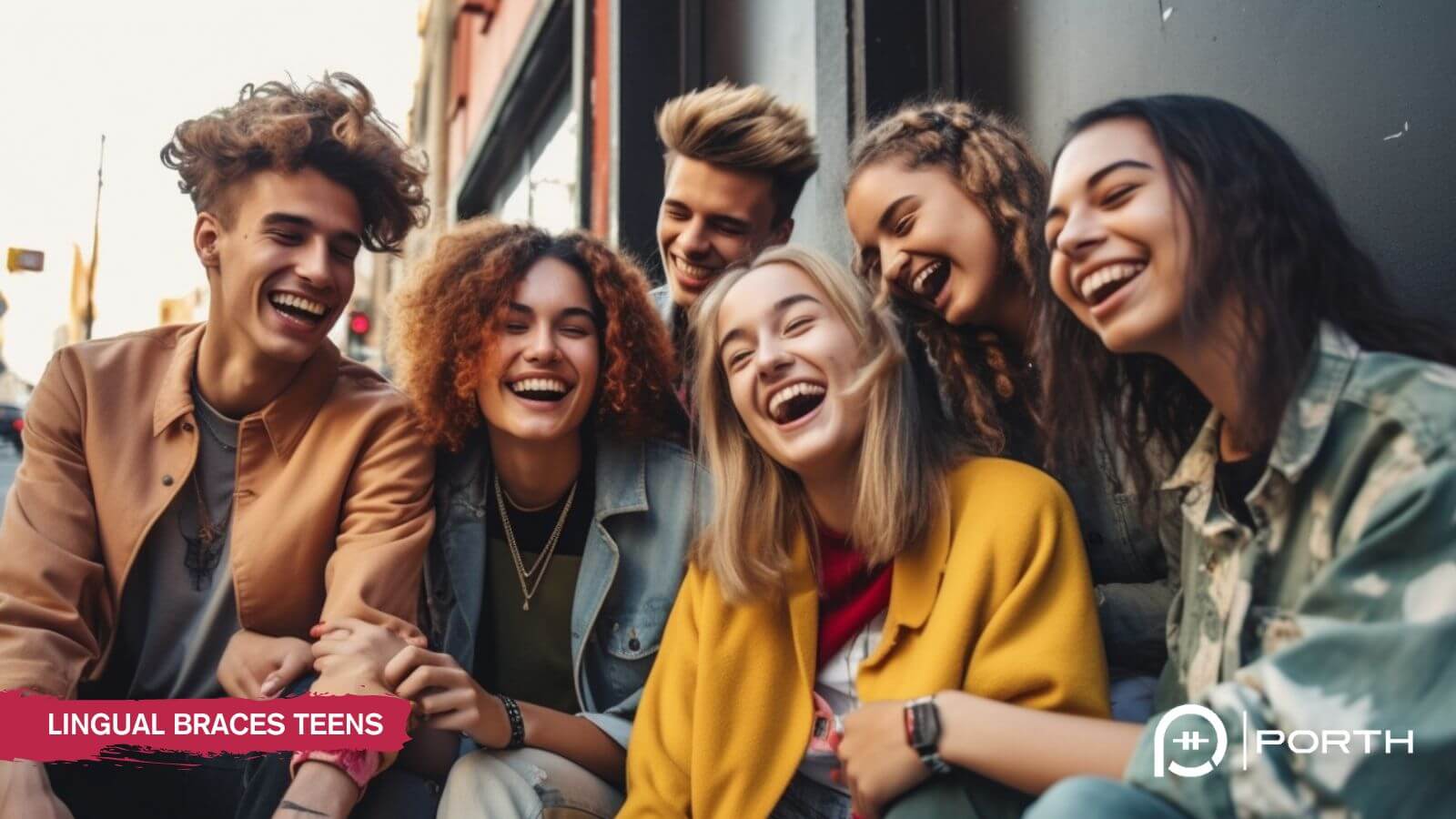Braces are almost a rite of passage for many teenagers, a journey towards achieving an aligned, beautiful smile. While conventional braces are a popular option, advancements in dental technology have seen a surge in the popularity of ‘invisible’ orthodontic treatments. One such option is lingual braces. In this blog post, we will address critical questions about lingual braces for teens and provide a comprehensive understanding of this orthodontic choice.
What Are Lingual Braces?
Lingual braces, also known as ‘inside braces’ or ‘invisible braces’, are a type of orthodontic treatment placed on the back of your teeth, specifically the lingual side. The technique and science around lingual braces is called lingual orthodontics. The primary goal remains the same as other braces – to correct malocclusions (improper bites) and misalignments. However, what makes lingual braces special is their invisibility when a person smiles, talks, or eats, since they’re hidden behind the teeth. Lingual braces are a great alternative to Invisalign or clear aligner treatment.
What are lingual incognito braces?
Several types of lingual braces options (lingual appliances) cater to unique preferences of lingual orthodontists. Examples of Incognito™ braces are custom-made for each patient. STb Light Lingual System emphasizes minimal friction. Brava or iBraces, like Incognito, are custom lingual braces. Harmony braces use a digitally customized self-ligating system. SureSmile lingual braces use a robotic bend wire designed based on the treatment plan using the advanced Suresmile digital platform. Accessibility to some of these systems in the United States is limited.
Why Choose Lingual Braces Over Traditional Braces?
For teens, one of the major benefits of lingual braces is aesthetics. Braces on the back of the teeth don’t show, making them less noticeable than traditional metal braces, which are placed on the front of the teeth and can sometimes be a source of self-consciousness. Ceramic braces (also known as clear braces) are an alternative option, but they are not completely esthetic. Lingual braces allow for the same treatment while being virtually invisible, providing a sense of comfort and boosting self-esteem while building a straighter smile.
Do Lingual Braces Hurt?
The initial few weeks of getting any orthodontic treatment with lingual brackets can be a little uncomfortable until your mouth adjusts to the new lingual brackets and archwires. With lingual braces, the discomfort might be slightly more due to their positioning, but most teens adapt quickly. Using dental wax, maintaining good oral health, and over-the-counter pain relievers can help during this initial period. Wearing spot guards during contact sports for patients with lingual braces could be challenging. We will adjust your sport guard for your lingual braces.
How Long Does Treatment With Lingual Braces Take?
Treatment times can vary greatly depending on the complexity of the case – for example, a treatment option for deep overbites takes longer than 12 months. However, like traditional braces, the typical treatment duration with lingual orthodontic appliances is on average from 12 to 28 months. Remember, the effectiveness of the treatment significantly depends on regular visits to your orthodontist and adherence to care instructions.
Are There Any Restrictions While Wearing Lingual Braces?
Like all types of braces, there are some dietary considerations to ensure the braces are not damaged. Hard, sticky, or chewy foods are best avoided. As for oral hygiene, brushing and flossing might be trickier, but it’s crucial to maintain a rigorous routine to avoid cavities or gum issues. Your orthodontist will provide a thorough guide on cleaning techniques specific to lingual braces.
Can All Teens Get Lingual Braces?
All teens with permanent teeth can get lingual braces. However, the final decision is between clear braces with partial esthetic, clear aligners with managing full-time wear of aligners (Invisalign), or lingual braces, a truly esthetic choice. Patients with lingual braces need retainers similar to treatment options with other orthodontic appliances.
It’s essential to have a comprehensive consultation with your orthodontist to evaluate if lingual braces are suitable for your individual case. Find out if you are a good candidate for lingual braces.
Orthodontists that offer lingual braces are very limited. You can use Google search to find an orthodontist near you offering lingual braces.
What Is the Cost of Lingual Braces?
The price for lingual braces is generally higher than traditional braces due to their custom-fit nature and the sophistication of the technology used. The cost may range anywhere between $5000 to $13000, varying by location, complexity of the case, and the orthodontist’s experience. However, many dental offices offer payment plans to make the cost more manageable.
Conclusion
Lingual braces can be a game-changer for teens seeking orthodontic treatment that is less conspicuous. Though they may require a bit more investment and adjustment, the benefit of a hidden orthodontic treatment often outweighs these challenges. Managing the requirement of orthodontic treatment with clear aligners (Invisalign), always discuss with your orthodontist and explore all your options before making a decision. The end goal is a healthier, happier smile – how you get there is up to you!
